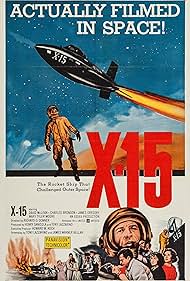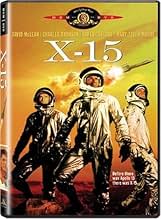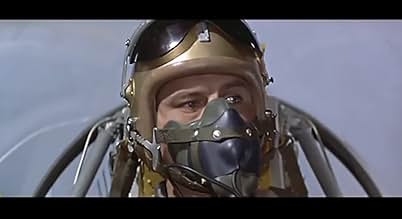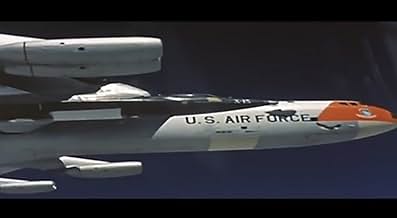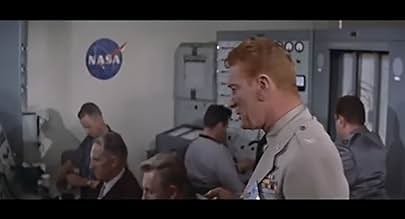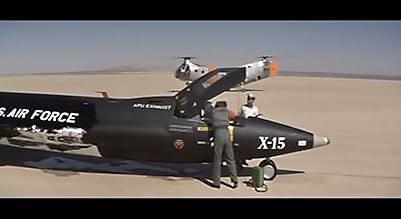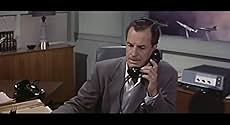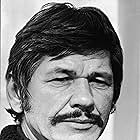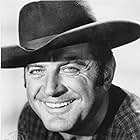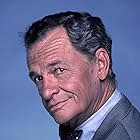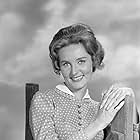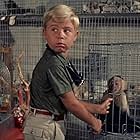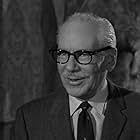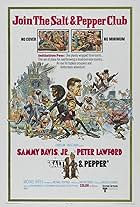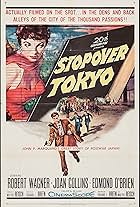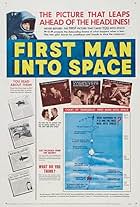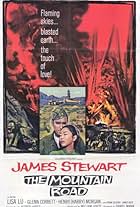During the Cold War in the 1960s the U.S.A.F. and NASA tested the experimental rocket-powered aircraft X-15 that set altitude and speed records and reached the edge of outer space.During the Cold War in the 1960s the U.S.A.F. and NASA tested the experimental rocket-powered aircraft X-15 that set altitude and speed records and reached the edge of outer space.During the Cold War in the 1960s the U.S.A.F. and NASA tested the experimental rocket-powered aircraft X-15 that set altitude and speed records and reached the edge of outer space.
James Stewart
- Narrator
- (voice)
Ric Applewhite
- Engineer
- (uncredited)
Robert Dornan
- Test Engineer
- (uncredited)
Ed Fleming
- Self (newscaster)
- (uncredited)
Storyline
Did you know
- TriviaThe high altitude high speed experimental rocket-powered research aircraft X-15 was built by North American Aviation and Reaction Motors in 1955-56 and it was operated by the U.S. Air Force and NASA as part of the X-plane series of experimental aircraft. The X-15 achieved altitude and speed records and still holds the official world record for the highest speed reached by a manned aircraft. Its first flight was on 8th of June 1959. Its maximum speed was 4,520 miles per hour (7,274 km/h), its maximum altitude was 67.0 miles (107.8 km), and it had a range of 280 miles (450 km). Three X-15s were built and flew a total of 199 test flights. Twelve test pilots flew the X-15.
- GoofsAt the beginning of the movie in a close-up side shot of the X-15 hanging under the B-52's wing, you can see that the cockpit cover on the X-15 is not fully seated in the closed position even though they are in a countdown to in-flight launch. A launch in that condition would have ripped the cockpit cover off of the aircraft and killed the pilot.
- Quotes
Lt. Col. Lee Brandon: When you're a man, you be a man.
- ConnectionsFeatured in 18th Annual Screen Actors Guild Awards (2012)
Featured review
Baby Boomers like me often wonder why manned space exploration seems so far behind the expectations of the 1960's. Instead of seeing humans walk on Mars, we're left with an all-but-useless space station serviced by 40-year-old Russian capsules and dangerously obsolescent American shuttles.
X-15 offers a glimpse of how things might have turned out. It's hard to believe there actually was an alternative to such dead-ends programs as Project Apollo, Skylab, and the Space Shuttle. The legendary rocketeer Werner Von Braun thought that America should enter space in stages: i.e., build a reusable orbiter, construct a large, permanent space station, and then use that platform to construct inexpensive, reusable vehicles for further exploration. Unfortunately, President John Kennedy's Race to the Moon made such a logical course of action impossible. X-15 shows, in part, how the U.S. Air Force wanted to fulfill Von Braun's vision.
The film is, for the most part, historically and technologically accurate. Few remember how exciting the X-15 rocket plane was as it left Earth's atmosphere years before the "tin cans" of Project Mercury. Despite negative claims from NASA (which coveted the millions of space research dollars going to the Air Force) a follow-up of the X-15, the X-20 Dyna Soar, might have orbited the Earth by the mid-1960's. Interestingly, the film includes cameo appearances of actual network TV correspondents who were convinced the X-15 would help America establish a permanent presence in space. A combination of factors: the urgency of Kennedy's race to the moon; the economic demands of the Viet Nam War; and reasonable fears of militarizing space killed off the Air Force's more-logical approach to earth orbit.
The film's dramatic climax, which depicts an X-15 actually orbiting the Earth, is a clear case of cinematic license. (The real X-15 was capable of sub-orbital flights only.) Nevertheless, a larger, two-man version, the X-15B, was designed by North American Rockwell, and there are many that still believe it could have achieved low earth orbit.
It's clear that director Richard Donner was given unprecedented access to the Air Force's facilities at Edwards Air Force Base/Dryden Research Center. The battle for funding with NASA was a make-or-break challenge, and the USAF clearly recognized the value of the mass media, and of providing a heroic and practical image of its X-15 program to American filmgoers. Although the film X-15 might be criticized on a number of artistic levels, it nevertheless stands as a valuable bit of early-1960's nostalgia that offers a rare glimpse into a forgotten chapter of space exploration.
X-15 offers a glimpse of how things might have turned out. It's hard to believe there actually was an alternative to such dead-ends programs as Project Apollo, Skylab, and the Space Shuttle. The legendary rocketeer Werner Von Braun thought that America should enter space in stages: i.e., build a reusable orbiter, construct a large, permanent space station, and then use that platform to construct inexpensive, reusable vehicles for further exploration. Unfortunately, President John Kennedy's Race to the Moon made such a logical course of action impossible. X-15 shows, in part, how the U.S. Air Force wanted to fulfill Von Braun's vision.
The film is, for the most part, historically and technologically accurate. Few remember how exciting the X-15 rocket plane was as it left Earth's atmosphere years before the "tin cans" of Project Mercury. Despite negative claims from NASA (which coveted the millions of space research dollars going to the Air Force) a follow-up of the X-15, the X-20 Dyna Soar, might have orbited the Earth by the mid-1960's. Interestingly, the film includes cameo appearances of actual network TV correspondents who were convinced the X-15 would help America establish a permanent presence in space. A combination of factors: the urgency of Kennedy's race to the moon; the economic demands of the Viet Nam War; and reasonable fears of militarizing space killed off the Air Force's more-logical approach to earth orbit.
The film's dramatic climax, which depicts an X-15 actually orbiting the Earth, is a clear case of cinematic license. (The real X-15 was capable of sub-orbital flights only.) Nevertheless, a larger, two-man version, the X-15B, was designed by North American Rockwell, and there are many that still believe it could have achieved low earth orbit.
It's clear that director Richard Donner was given unprecedented access to the Air Force's facilities at Edwards Air Force Base/Dryden Research Center. The battle for funding with NASA was a make-or-break challenge, and the USAF clearly recognized the value of the mass media, and of providing a heroic and practical image of its X-15 program to American filmgoers. Although the film X-15 might be criticized on a number of artistic levels, it nevertheless stands as a valuable bit of early-1960's nostalgia that offers a rare glimpse into a forgotten chapter of space exploration.
- How long is X-15?Powered by Alexa
Details
Box office
- Budget
- $422,500 (estimated)
- Runtime1 hour 47 minutes
- Aspect ratio
- 2.35 : 1
Contribute to this page
Suggest an edit or add missing content

